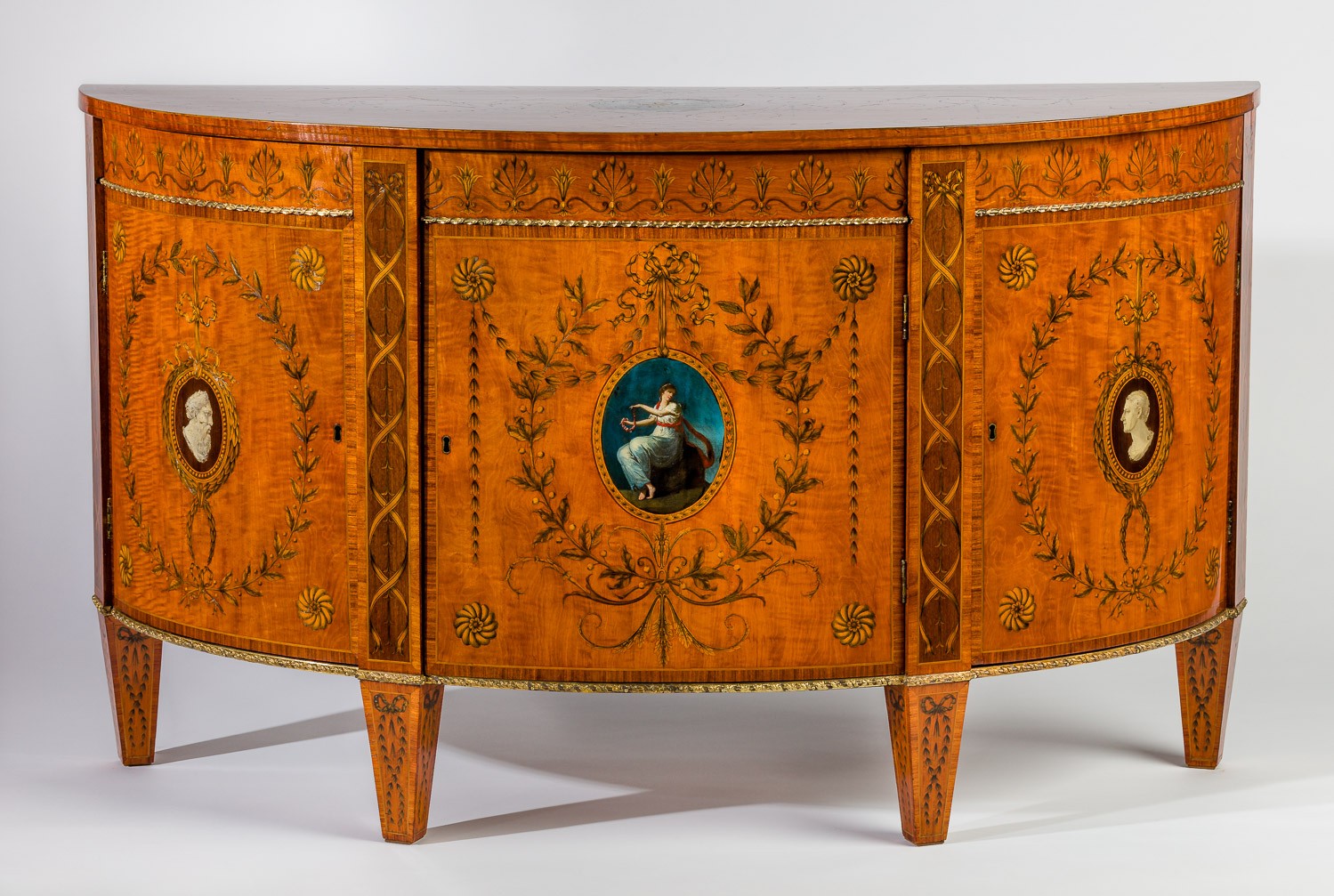Half-moon chest of drawers
Rosewood, citrus wood and amaranth veneer, England, second half of the 18th century, Adam-style
This half-moon chest of drawers has three doors. The edge of the shelf does not have moulding and the astragal that separates the frieze from the rest of the furniture and the moulding below the doors are sculpted into twisted ribbons. The four pilasters that separate the doors are offset and the feet are sheathed. The marquetry work is embellished with shading, which is created using delicate lines of black ink. The pilasters are decorated with a knot, the ribbons of which twist downwards around an ear of corn. The frieze is decorated with a repeating series of Greek palmettes, which are separated by a flower. The doors’ reserves have a wavy citrus wood veneer. On the side doors, the painted medallion (which depicts a philosopher) is framed by a string of pearls surrounded by a laurel wreath. This hangs from two superimposed ribbon knots. A large garland of laurel branches, which starts from a knot and four rose-window spandrels, completes the decoration. The four ‘antique’ medallions may be the work of Swiss painter Marie Anne Angelica Catherine Kauffman (1741–1807). The medallion on the central door (the largest one, which depicts an allegorical tale) is supported by a knot, from which a garland of corns extends towards the upper rose window. A waterfall of corns hangs from these rose windows. The decoration is complemented by two lower rose windows, floral scrollwork beneath the medallion and two laurel branches that are similar to those on the side doors. The shelf is decorated with marquetry work in the same style as the central door.
